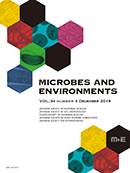37 巻, 1 号
選択された号の論文の11件中1~11を表示しています
- |<
- <
- 1
- >
- >|
Regular Paper
-
原稿種別: Regular Paper
2022 年37 巻1 号 論文ID: ME21041
発行日: 2022年
公開日: 2022/03/26
PDF形式でダウンロード (551K) HTML形式で全画面表示
Regular Paper
-
原稿種別: Regular Paper
2022 年37 巻1 号 論文ID: ME21074
発行日: 2022年
公開日: 2022/03/26
PDF形式でダウンロード (1637K) HTML形式で全画面表示
Regular Paper
-
原稿種別: Regular Paper
2022 年37 巻1 号 論文ID: ME21065
発行日: 2022年
公開日: 2022/03/24
PDF形式でダウンロード (920K) HTML形式で全画面表示
Regular Paper
-
原稿種別: Regular Paper
2022 年37 巻1 号 論文ID: ME21052
発行日: 2022年
公開日: 2022/03/16
PDF形式でダウンロード (4029K) HTML形式で全画面表示
Regular Paper
-
原稿種別: Regular Paper
2022 年37 巻1 号 論文ID: ME21094
発行日: 2022年
公開日: 2022/03/12
PDF形式でダウンロード (1473K) HTML形式で全画面表示
Regular Paper
-
原稿種別: Regular Paper
2022 年37 巻1 号 論文ID: ME21076
発行日: 2022年
公開日: 2022/03/10
PDF形式でダウンロード (1947K) HTML形式で全画面表示
Short Communication
-
原稿種別: Short Communication
2022 年37 巻1 号 論文ID: ME21073
発行日: 2022年
公開日: 2022/03/08
PDF形式でダウンロード (234K) HTML形式で全画面表示
Regular Paper
-
原稿種別: Regular Paper
2022 年37 巻1 号 論文ID: ME21053
発行日: 2022年
公開日: 2022/01/27
PDF形式でダウンロード (3379K) HTML形式で全画面表示
Regular Paper
-
原稿種別: Regular Paper
2022 年37 巻1 号 論文ID: ME21060
発行日: 2022年
公開日: 2022/01/27
PDF形式でダウンロード (526K) HTML形式で全画面表示
Regular Paper
-
原稿種別: Regular Paper
2022 年37 巻1 号 論文ID: ME21067
発行日: 2022年
公開日: 2022/01/27
PDF形式でダウンロード (2402K) HTML形式で全画面表示
Regular Paper
-
原稿種別: Regular Paper
2022 年37 巻1 号 論文ID: ME21061
発行日: 2022年
公開日: 2022/01/01
PDF形式でダウンロード (919K) HTML形式で全画面表示
- |<
- <
- 1
- >
- >|
